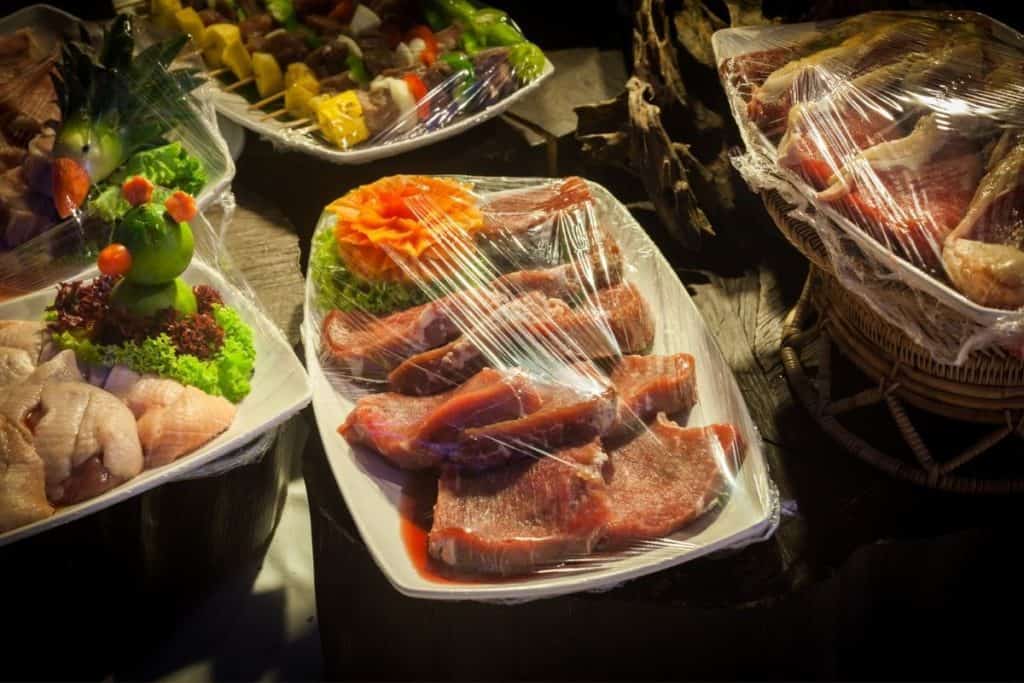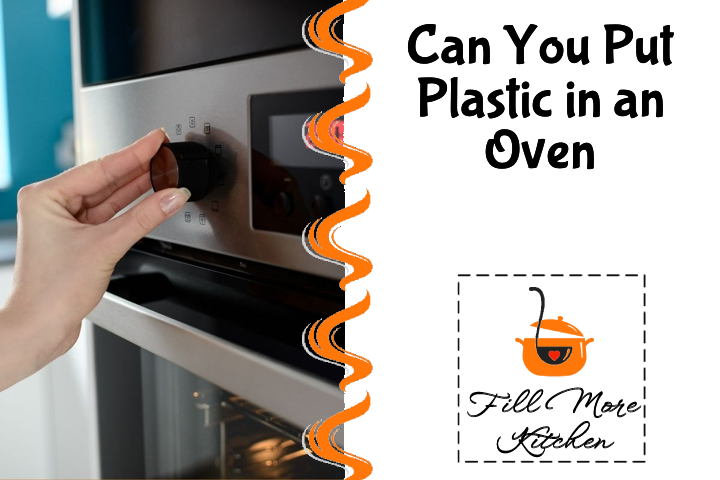Learning through trial and error is a challenging process for some things. We tend to lose the ability to think and analyze before taking action at certain times in our lives. However, it is crucial to consider the consequences of placing specific materials in an environment with high temperatures.
When it comes to placing items in various appliances such as ovens, microwave ovens, air fryers, and pressure cookers, there are several factors to consider depending on the appliance’s design. Once you become familiar with these considerations, you will know what can and cannot be placed in each appliance.
Putting plastic in a heated oven is not recommended. When exposed to heat, plastic items will start to soften at low temperatures and may begin to melt and emit fumes at slightly higher temperatures. As the plastic is heated, it can release chemicals before melting, and once melted it can be difficult to clean up and could even cause a fire.
Avoid putting plastic in an oven as it can not only create a difficult-to-clean mess but also pose potential health hazards.
But does this really apply to all types of plastic or are there exclusions to the rule?
What Plastic Can Go in the Oven?
CPET (Crystallized Polyethylene Terephthalate) is a type of plastic that has been crystallized to enhance its heat resistance, and it can withstand temperatures ranging from 32 to 400 degrees Fahrenheit without melting.
Using CPET in an oven doesn’t necessarily imply complete safety, but it indicates that it can endure higher temperatures compared to ordinary plastic.
Exceeding 400 degrees Fahrenheit in the oven can result in plastic melting and seeping into food, which may lead to sickness; therefore, it is crucial to monitor the temperature when utilizing CPET ovenable containers.
CPET is…
- Recyclable
- It is safe to place in the microwave and freezer.
- It is safe to place in the dishwasher
CPET is not…
- Regular plastic containers are just as inexpensive
- Although not entirely impervious to high temperatures, plastic is relatively more resistant than its regular form.
At What Temperature Does Plastic Melt in the Oven?
Plastic can be put in an oven only if the oven is cold or if the plastic is ovenable, meaning it can withstand heat. However, it’s important to clarify what is meant by a cold oven – is it an oven that isn’t turned on or one that operates at low temperatures?
The melting point of plastic varies depending on the type of plastic, so there is no specific temperature at which all plastics melt. The difference in melting points can be observed when comparing polyvinyl chloride with stronger plastics.
Polyvinyl can begin to melt at temperatures as low as 175 degrees Fahrenheit, but many durable plastics can tolerate much higher temperatures. Nevertheless, most plastics will have melted by the time the temperature reaches 500 degrees Fahrenheit.
For most types of plastic, a reasonable temperature range would be around 175-300 degrees.
It is important to avoid melting plastic in your oven or any other part of your home because the fumes generated by heating plastics can be flammable, particularly in significant amounts, and burning plastic can lead to a fire.
Is Microwavable Plastic Safe in the Oven?

Containers are marketed as either microwave-safe or oven-safe, and it can be easy to confuse the two or assume that they are interchangeable. However, just because a dish or container is labeled as microwave-safe does not necessarily mean that it is safe or advisable to use in the oven.
The characteristics required for a dish to be suitable for use in the microwave are different from those needed for it to be safe to use in the oven. As opposed to the microwave, which doesn’t heat plastic for an extended period, the oven exposes plastic to high temperatures over a prolonged duration, resulting in its melting in most cases.
Although there are dishes and containers that can be used in both the microwave and oven, they are not made of plastic, and if they are safe to use in both appliances, they will be clearly labeled as such. This category of containers is limited to Pyrex, ceramic, and stoneware pieces.
How Do You Get Plastic out of an Oven?
The reason why melted plastic is a problem and should be avoided is that it can be challenging to remove once it has fused with the surface it was on after burning.
Fortunately, with an increasing number of individuals encountering this issue, several techniques have been created to streamline the procedure.
Although there are methods to remove plastic from an oven, it is still highly recommended to take all necessary precautions to prevent plastic from melting in the oven.
Assuming the mishap has occurred, and we are present to acknowledge it, having gained knowledge from our mistakes, how do we proceed?
If you want to remove melted plastic from a regular electric or gas oven, you can start by placing a bag of ice on it to cool and solidify the plastic. After that, use a razor blade scraper to scrape off all the melted plastic from the surface of the oven.
Using a razor blade to remove plastic from the oven should not cause any harm to the interior of the oven if done with caution.
Can I Use Tupperware in an Oven?
No, it is not advisable to use Tupperware in an oven as these containers are composed of plastic and cannot endure the extreme temperature, which can lead to a meltdown.
Tupperware is not suitable for use in any appliance that functions like an oven, such as stovetops, grills, convection microwaves, and traditional ovens.
As long as the Tupperware container bears the symbol indicating its safety for use in a microwave, it can be utilized in that appliance.
Heating plastic containers, including Tupperware, in an oven can cause leaching. Tupperwareindia.com states that Tupperware is capable of enduring temperatures up to 80 degrees Celsius.
Using Tupperware containers in ovens is not recommended as ovens are usually operated at temperatures higher than 80 degrees Celsius.
Conclusion
Plastic should not be put in an oven due to the lack of compatibility between the properties of plastic and the environment inside an oven, which can result in negative consequences without any benefits.
It is advisable to use a substitute that is safe for the oven. It’s important to note that just because an item is safe for the microwave, it doesn’t mean it can be used in the oven as well since they are not similar in any way. To avoid causing harm to yourself and others, exercise caution. Best of luck and thank you for reading.
You can also check this video about “Can You Put Plastic in an Oven?”
Check out our 10 reviews!
Related posts
https://fillmorekitchen.com/can-you-leave-an-instant-pot-unattended/
https://fillmorekitchen.com/can-a-fridge-be-too-full/
https://fillmorekitchen.com/why-does-pasta-sometimes-smell-bad/
https://fillmorekitchen.com/can-you-make-popcorn-in-a-toaster-oven/
https://fillmorekitchen.com/does-air-fried-food-taste-as-good-as-deep-fried-food/



